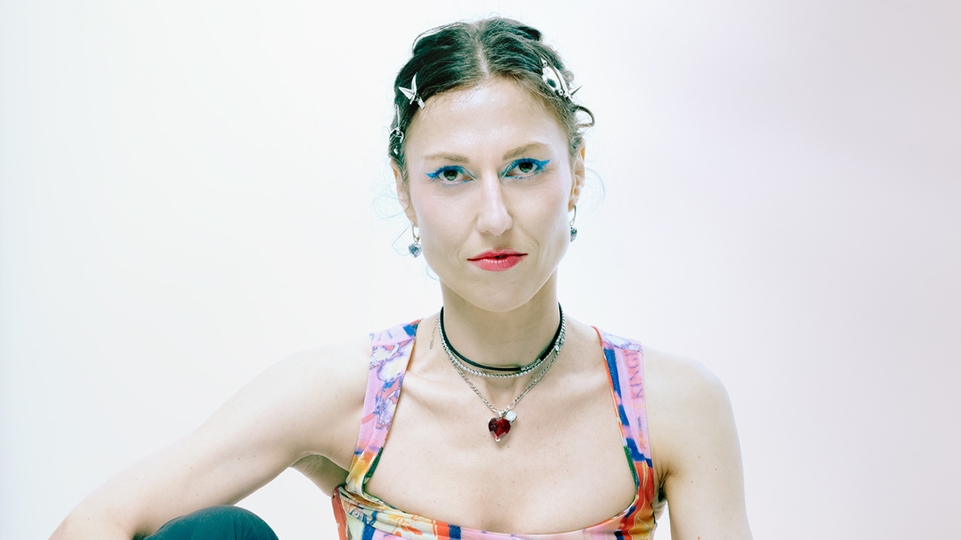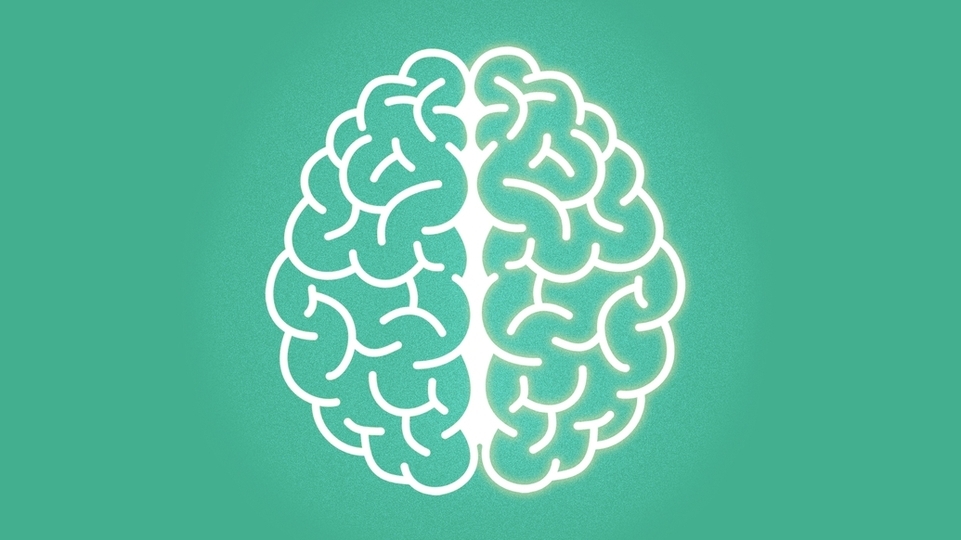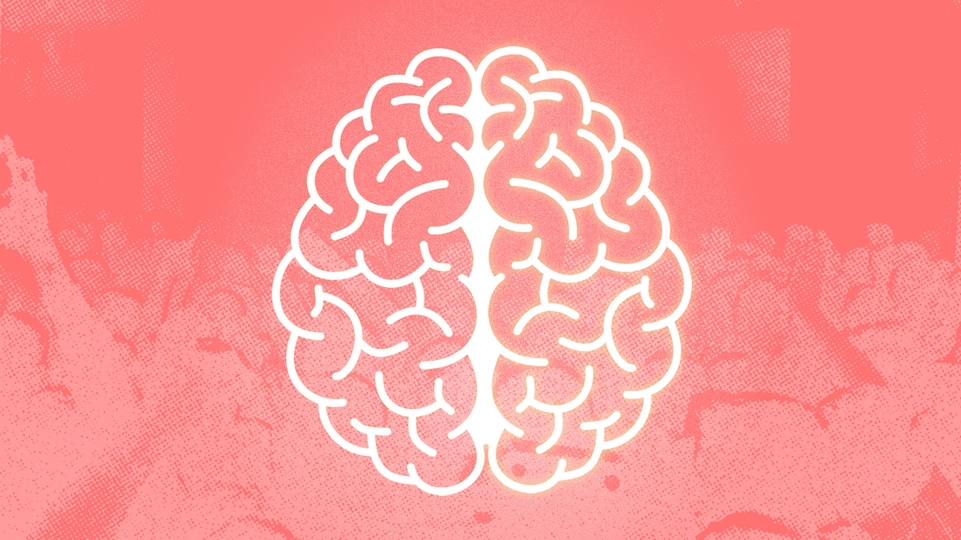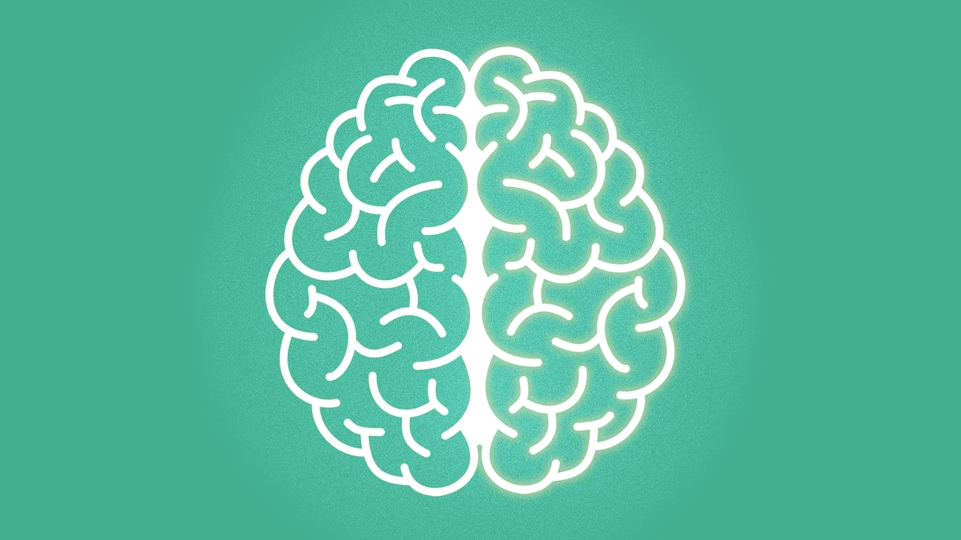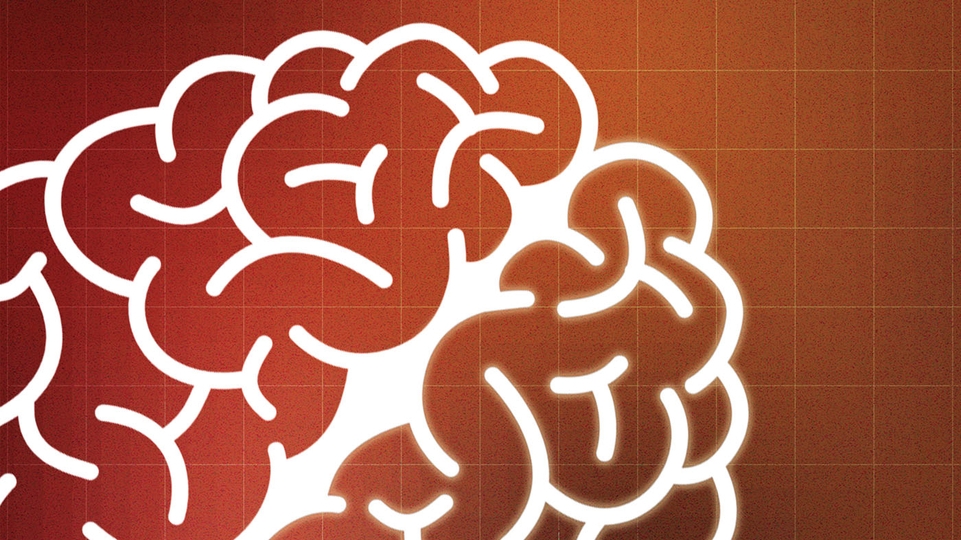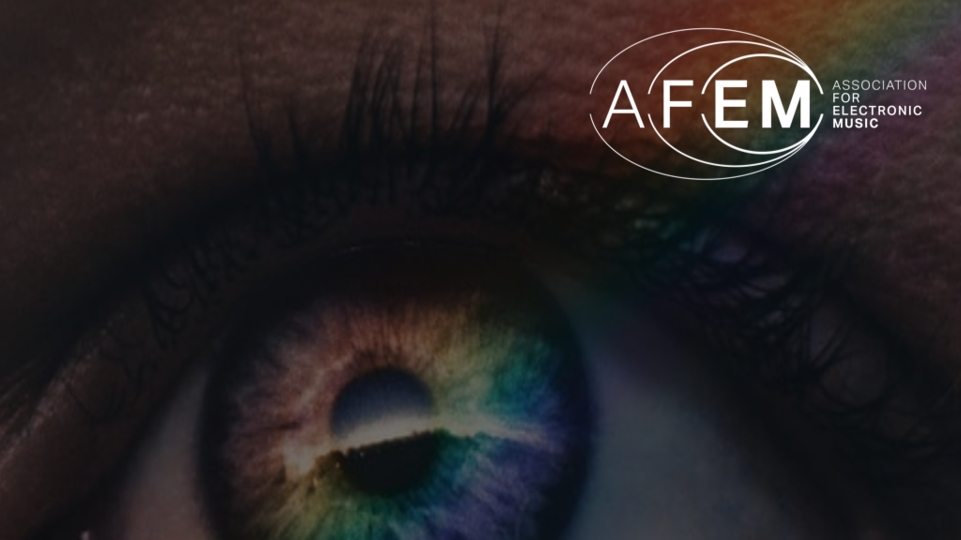
Exploring the relationship between neurodiversity and dance music
Neurodiversity refers to a wide range of neurological conditions including ADHD, autism, dyslexia and Tourette syndrome. After being diagnosed with ADHD and suspected autism earlier this year, DJ Mag writer Harold Heath began to wonder: is there a particularly high number of neurodivergent people in the scene? Here, he embarks on a personal journey to try and understand the relationship between neurodiversity and dance music, and its wider relevance within the scene
I’m Harold Heath: music writer, former small-time DJ/producer, and life-long club culture fanatic. Earlier this year I was diagnosed with ADHD and suspected autism. Why are we talking about ADHD in DJ Mag? Because I had noticed in the last few years a seeming increase in the number of people within club culture who have been diagnosed with ADHD. This raised a lot of questions for me: what was going on? Are there more people with ADHD in dance music than in other sectors? Is there something about club culture that attracts people with ADHD? And what about DJing? All that list-making, cataloguing and obsessive curating exhibited by many DJs, including me — was it autistic behaviour? A lot of questions; such is the nature of the ADHD brain. But before we attempt to answer any of them, let’s clarify a few terms.
Attention Deficit Disorder (ADD) and Attention Deficit Hyperactivity Disorder (ADHD) are two different forms of the same condition. They come under the blanket term ‘neurodiversity’ which also includes other lifelong conditions like dyslexia, dyscalculia, dyspraxia, Tourette syndrome and autism (ASD). According to Dr. Tony Lloyd, psychologist and CEO of the UK’s leading neurodiversity charity The ADHD foundation, “neurodiverse people make up at least 20% of the population”.
Those with ADD/ADHD may be prone to inattentiveness, impulsiveness, disorganisation, procrastination, restlessness, low frustration tolerance and poor time management. ADD/ADHD can have a substantial impact on mood and social interaction, and thus, on most aspects of everyday life, especially when undiagnosed. Nanette Mellor is CEO of The Brain Charity, an organisation that supports those with neurological conditions, and tells me: “ADHD is often misunderstood as the inability to pay attention. In fact, individuals with ADHD find it difficult not to pay attention to everything around them and so can become distracted from what it is they really want to do. This can result in a kind of overload of stimulation within the brain which can be extremely distracting, tiring and in some cases debilitating.”
Conversely, while it’s difficult to generalise, many people with ADHD are highly creative and often original thinkers. Many have boundless energy that they can channel into their chosen field. And many people with ADHD, counterintuitively, experience something called hyperfocus, where they’re able to deeply concentrate on a task to the exclusion of all else for long periods.
What does this mean day to day? Well, everyone’s experience of ADHD is different; there are core symptoms common to most, but also individual variations that may take people off in opposite directions. For me, prior to diagnosis, it’s been a lifetime of disorganisation, low-level chaos and hurrying everywhere — while realising halfway through my journey that I don’t have the exact address of where I’m supposed to be. It’s also been a gradual reduction in self-esteem and a corresponding rise in depression and anxiety over many decades, due to problems at work and in my social life arising from undiagnosed ADHD. Additionally, it’s also meant that I have been able to devote extraordinary levels of concentration to DJing, music production and writing, which has provided me with great solace and happiness over the years. So something of a mixed bag.
The root causes of ADD/ADHD are not completely understood, but studies suggest that it may be due to an imbalance of a particular neurotransmitter — a chemical in the brain — called dopamine, which is associated with emotional regulation, motivation, alertness and mood. Essentially, it’s believed that the brains of people with ADD/ADHD work in a slightly different way to ‘typical’ brains. It’s not a question of intellect; people with ADD/ADHD are as clever, or indeed not, as anyone else; they’re just not as good at some things, and better at others.
There are lots of disagreements around many of these terms, but for this article I’ll follow scientific orthodoxy and use ‘neurodiversity’ to describe the cluster of conditions mentioned above. And while every human mind is unique, so we are all in a sense neurodivergent, there is an average range of human neurology and then there are some people whose neurology is outside of this range, so again, I’ll be following scientific orthodoxy and using the terms ‘neurotypical’ and ‘neurodivergent’.
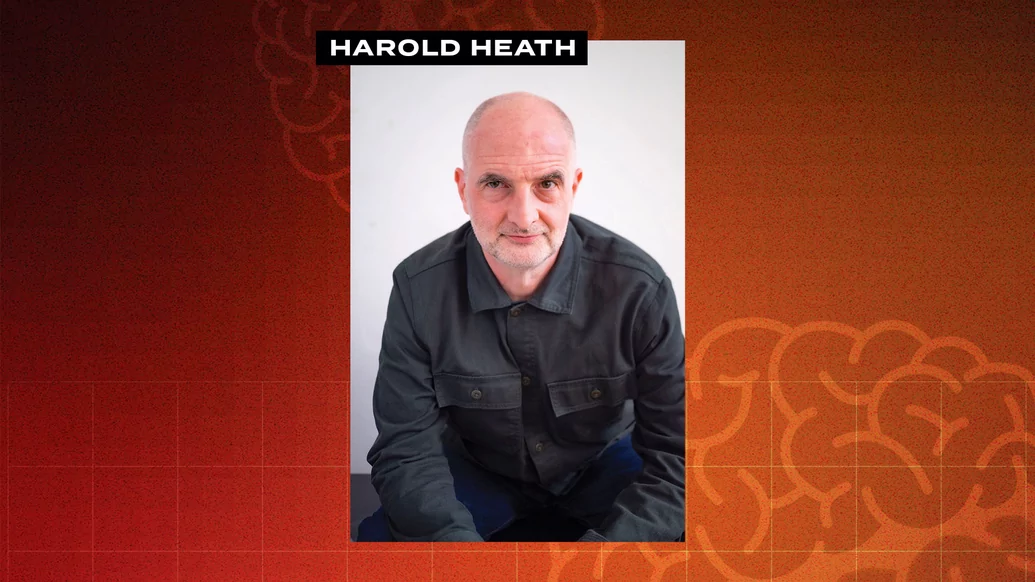
The first thing I wanted to find out was if there were particularly high numbers of neurodivergent people working in dance music. Tristan Hunt, regional manager at the Association For Electronic Music (AFEM) and a neurodiversity advocate has been conducting research into the number of neurodivergent people in the music industry. “The feeling is that within the creative industries,” Hunt says, “you have a far higher proportion of people with neurodiverse conditions, simply because their neurobiology means that they are more oriented towards creative thinking.”
“We know that there are an abundance of creatives who have ADHD in all the creative industries, particularly music,” Dr. Lloyd tells me. “I just think that there is something about a need to create something that is part of the neurology of ADHD.”
Consultant psychiatrist Dr. Richard Parkin assesses and treats a range of mental health conditions including ADHD, and while he’s not especially noticed neurodivergent people gravitating to particular sectors, he observes that “if we take the basic principle that people with ADHD thrive on novelty, stimulation and interest, then desk jobs, routine jobs or mundane jobs tend not to suit them very well at all, whereas jobs that involve quick-thinking reactions and creativity may be more suited to them”.
So for people with ADD/ADHD, creativity seems to be part of the allure of working in the music industry, but the nature of the dance music business with its untraditional hours, unorthodox working conditions and high amount of self-employment also appears to be attractive to many neurodivergent people too. Dr. Lloyd: “What’s really interesting is that research is telling us that over 30% of business owners have ADHD or dyslexia, or both, and that university graduates with ADHD are twice as likely to start their own business.”
Often the formalities and unwritten rules of traditional employment structures can be difficult to navigate for people with ADHD and may also be part of the reason for the high numbers of neurodivergent people in the music industry. This is echoed by Tina Edwards, a DJ, music journalist and broadcaster who has ADHD. “Neurodivergent people are often creative by nature and can struggle with 9-to-5 culture and the formalities, social expectations and restrictions of working at a desk,” she says. “I think it leads us to a lifestyle where we are the boss, we create our own schedule and we can be led by our creativity... So I think there are certain elements of ADHD that can complement a career in music and I think it’s a more happy, comfortable place for someone with ADHD to be.”
So people with ADD/ADHD may do better in non-traditional work roles and often crave novelty, stimulation and creativity. You can get novelty, stimulation and creativity in many job sectors, but there’s no doubt you can get plenty of all those things working in the dance music industry, so this could certainly go part of the way to explain why so many people like me found their life’s work in dance music.
But as I reflect on my journey in the dance music scene, I’m beginning to think there’s more to it than that. Dance music, from breakdancing and hip-hop/electro in the ‘80s, right through the various incarnations of house and techno and beyond, has always been where I truly felt at home, content, comfortable, at peace, welcome. Thinking back, I wonder if there was something else too, another element of club culture that helped assuage the social struggles many undiagnosed neurodivergent people experience.
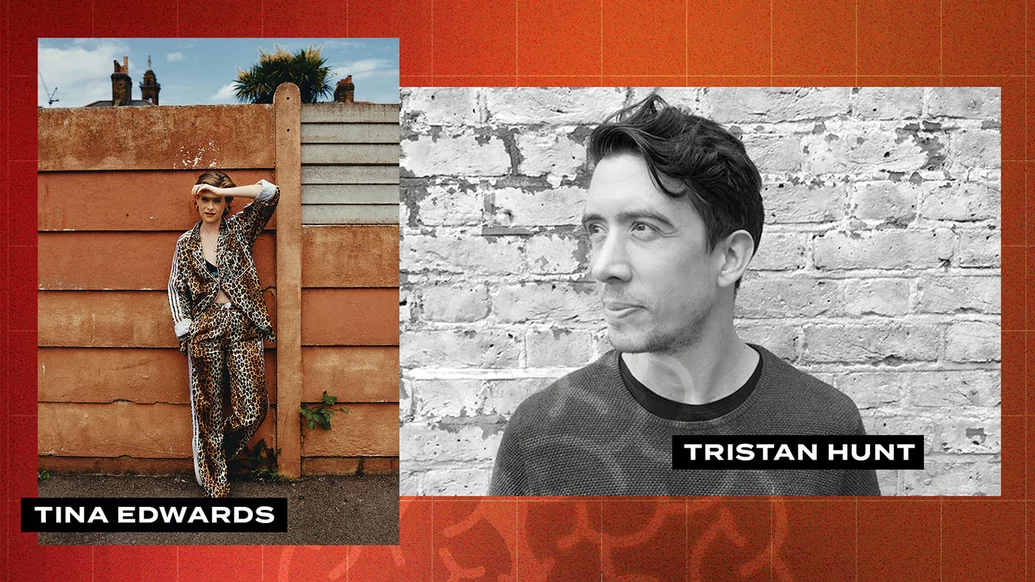
For many neurodivergent people, social interaction is experienced differently to neurotypicals. For some, socialising can be exhausting, for others it can sometimes be awkward and conversations might not flow as easily as they seem to for others. “For many people with ADHD, ordinary social interactions can be quite anxiety-inducing,” says Dr. Parkin. “So for example, they know that they may zone out of conversations, they may not be able to focus, they’re going to be distracted, or they might jump in and talk over people or over-talk.”
Many people with ADHD also experience something called Rejection Sensitive Dysphoria, an extreme emotional sensitivity caused by constantly believing they’ve been rejected or criticised by others, or by a sense of failing to meet their own high standards. “It’s different for everyone, but because of the neurobiological makeup, the ADHD nervous system is essentially wired differently to the neurotypical brain, which means that people with ADHD are often more physically and emotionally sensitive,” says Tristan Hunt. A lifetime of experiencing this sensitivity without knowing what it is, of making decisions about relationships and interactions based on skewed information due to a paucity of dopamine often leads to long-term low self-esteem, anxiety and depression.
Techno live act and producer Saytek has been diagnosed with ADHD, dyslexia, dyspraxia and ASD and both his children, Jacob and Josh, have been diagnosed with ADHD too. He’s currently an internationally successful performer signed to labels like Carl Cox’s Awesome Soundwave, Superfreq and Trax. However, he was only diagnosed when he was 30 years old, and before this experienced substantial problems related to his undiagnosed neurodivergence. “I had these weird kinds of interests as a child; everyone was into football and l was into stuff like learning Japanese!” he tells us. “I was a bit of an oddball, a bit of a loner, and I had immense struggles with mental health.” These struggles led to substance abuse from his early teens, which then led to serious addiction problems.
A lot of Saytek’s story resonates with me. I too was a bright but awkward kid who sometimes struggled to fit in. Teachers, other kids at school and family members often thought of me as aloof, or day-dreamy, or sensitive, or just a bit odd. I too started misusing substances in my teens because it was exciting, stimulating, the result of impulsivity and a need for excitement. Sound familiar? Then in the late ‘80s, I discovered acid house and rave culture and dived into a world where, (a) I was welcomed unreservedly by the broadest range of people I’d ever met, and (b) where you could take loads of drugs. “Sign me up,” I probably said at the time — I can’t remember, I was really high. This experience isn’t exclusive to those with neurodiverse conditions, but is clearly a route that many with undiagnosed neurodivergence take.
Tristan Hunt from AFEM makes a salient point. “When we look at the roots of our subculture, it was anti-establishment, it was something for people who weren’t necessarily comfortable in the mainstream,” he says. “They wanted to look for something different, and literally found their own tribe.”
Liam O’Reilly, head of marketing and PR at Glasgow’s Sub Club and label boss and booking agent for Ilian Tape Records has severe ADHD with moderate emotional dysregulation and suspected ASD, and makes the same point: “For people who’ve maybe felt quite alone and ‘outsider-y’, underground dance music particularly has always been a safe haven.”
When we consider house music’s roots in the celebratory, emancipatory and community-based parties of American Black, Latino and gay people, it’s not surprising that house music culture has generally been egalitarian, tolerant and inclusive. These traits, present in the DNA of house music culture from the start, were transplanted directly to the UK, where they easily melded with the freedom-loving anarchy of the UK’s free party scene and, aided by the availability of ecstasy, created a sub-culture that couldn’t have been more perfect for people like me. Welcoming, non-judgemental, happy, exciting, stimulating: home.
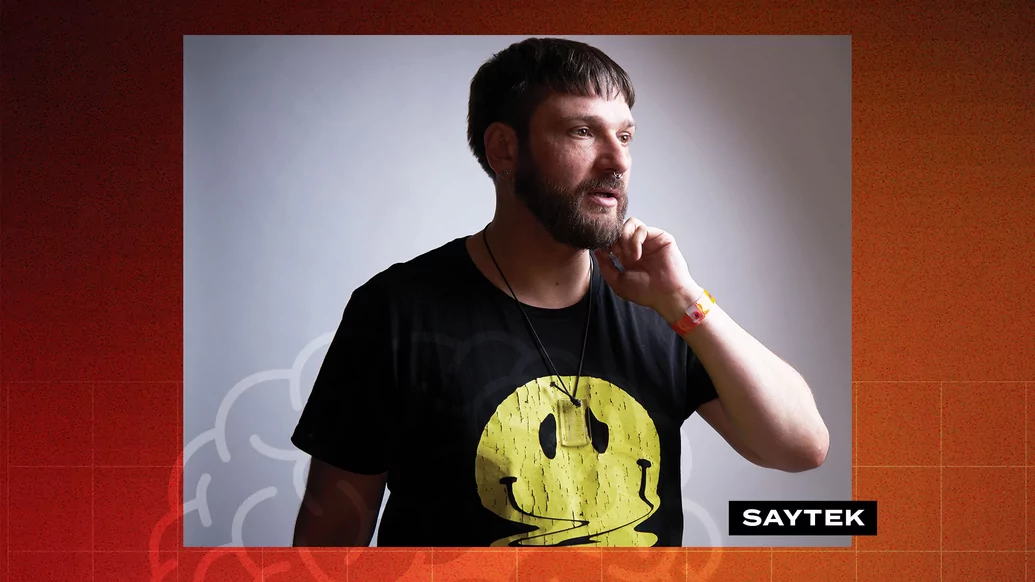
There’s another element of club culture that is extremely attractive to those with ADHD. “The body’s natural way of producing more dopamine is to move,” explains Dr. Lloyd, “and one of the ways that we get a dopamine rush is through dancing. So in a sense, there is something almost self-medicating, self-healing, about that kind of activity for somebody who has ADHD.”
So a socially awkward person, who craves novelty and creativity, who self-medicates their anxiety and depression which arises from undiagnosed neurodivergence, suddenly finds somewhere overflowing with novelty and creativity, where they feel truly, authentically welcome, where the effects of their unknown dopamine paucity are alleviated by dancing to music they love, and where getting utterly spangled is positively encouraged. I’m beginning to see why I ended up in dance music, and perhaps why many other neurodivergent people do too.
When I first discovered club culture I found somewhere that welcomed me — an awkward music nerd — unreservedly. My obsessive nature found a focus in music and DJing, and that obsessiveness was suddenly a bonus, not something weird. The sensory stimulation of the rave/club environment — the lights, the loud music, feeling the bass in my gut, the constant movement of the dancefloor — all made me feel happy, engaged, excited; but also at peace.
I hear similar experiences from many people I speak to for this article. “Now I look back at it, in a beautifully sad kind of way, the times on the dancefloor in some of the most turbulent moments of my life were probably the only moments that I ever felt calm and at peace really,” says Liam O’Reilly. “Clubbing is obviously an incredibly stimulating environment and loud music, lights and movement are all things that are dopamine-releasing, so I guess it’s a very good natural medication, and can lead to a level of calm and a level of freedom that isn’t normally accessed in the rest of life.”
Tina found that she also experiences similar relief from her ADHD symptoms when she listens to improvised jazz. “ADHD is all about the lack of dopamine and how we can be hyperactive in order to stimulate neurotransmitters into releasing dopamine, which then gets us into a state where we can concentrate better. Live jazz for me is so impulsive and so exciting, and I don’t know what’s coming next; but it almost feels like it’s releasing the dopamine for me, and it puts me into that state where I can just focus and be present and mindful, because there’s so much excitement to keep me stimulated.”
Saytek also speaks of how intense his experience of music is: “When I listen to music, it completely takes me away and gives me a massive euphoria; it’s such an intense experience of joy, which I can’t really get anywhere else.” And Luke Una in his recent Guardian interview said, “I’m ADHD, and with an overactive mind life can be pretty torturous... Music just stops the fucking noise.” If nothing else, researching this article has made me realise how many people there are like me, for whom music provides relief and joy in a way that nothing else does.

Studies into music and dopamine point to why this might be. Research published in Nature magazine in 2011 found that “intense pleasure in response to music can lead to dopamine release”, while a more recent study from 2019 found that “listening to the music you love will make your brain release more dopamine, a crucial neurotransmitter for humans’ emotional and cognitive functioning.” Nanette Mellor concurs. “Brain scans have demonstrated music increases dopamine neurotransmission within the brain, so it is not surprising to hear that there may be a real correlation between the number of people with ADHD working within the music industry,” she says.
Obviously, the vast majority of people can derive pleasure from music, but it would also appear that because of its effect on the production of dopamine, music can also mediate some of the symptoms of ADD/ADHD. In short, music and dancing have the potential to make most people with ADD/ADHD feel awesome.
So if there are above-average numbers of neurodivergent people in dance music, there are certainly a few reasons that we could posit as to why this might be, while being wary of generalising. Many neurodivergent people have found the welcoming nature of much of dance music conducive to their ‘fitting in’ or ‘being themselves’ in a way that other parts of society aren’t. Many people with ADD/ADHD crave excitement, novelty and stimulation, which they can easily find in club culture. And while the love of music is not exclusive to people with ADD/ADHD, there does seem to be a neurological reason why they get so much out of music and dancing and it appears that elements of club culture can alleviate some of their symptoms.
And finally, while it’s a tough truth, the broad acceptability of drug use in many parts of club culture has also drawn many self-medicating, undiagnosed neurodivergent folk to dance music too.
So if there are such high numbers of people in dance music who have ADHD, why are we only noticing now? Well, ADHD wasn’t that well known 20 or even 10 years ago, so a lot more people are only now getting diagnosed, particularly those in their forties and fifties. Andy Edwards is a music business executive with ADHD and AS who splits his time between working for UK Music and as a consultant. “Half the issue has been that none of us in the industry, especially our generation, or anybody over 30 has been particularly aware of neurodiversity,” he tells us. “So as a consequence for a lot of people the whole process of being in the music industry has probably been more of a bumpy road than perhaps it could have been.”
Historically, neurodiversity has been underdiagnosed in women, so more women are getting diagnosed now too, and many studies also show that ADHD and other neurodivergence have also been underdiagnosed in Black people as well. So we appear to be in a period of growing awareness and therefore increased diagnosis. Looking forward, we may also be in a period of transition in terms of how we think about differences such as ADHD or ASD. Our education and social paradigms have always conceptualised difference as a pathology: as disorders, conditions, illnesses, things to be fixed.
Dr. Tony Lloyd thinks we’re in a cultural paradigm shift toward viewing difference as a value rather than a pathology: “The really pioneering, groundbreaking, most successful industries in the 21st century are those that have been saying we need people around the table who think differently... You see young people now who are rejecting this term, ‘special educational needs’, because it can have all kinds of negative connotations, in the same way that the current generation really embrace diversity in the truest sense of the word: as a value.”
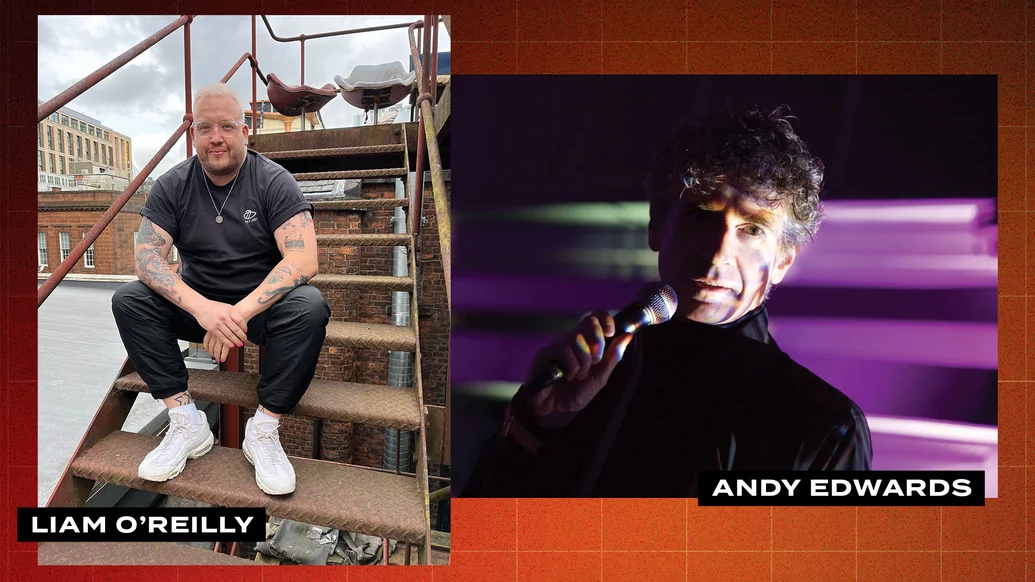
“The most beautiful thing about club culture is the celebration of individuality. That is at the core of it, regardless of your neurotype: to be who you are and to live as freely as possible" - Liam O'Reilly
So we’ve generally thought of things like ADHD as a problem, and certainly, I can speak from my own experience, undiagnosed neurodivergence has definitely bought me many challenges over the years. But neurodivergence can have a positive side and many of its negative effects are less the ‘fault’ of the ‘condition’ and more the result of a non-typical brain attempting to fit into a neurotypical world.
Following his diagnosis, Saytek beat his drug addictions, began to learn about how his mind worked and slowly turned his life and career around. Insight into how his neurodivergence affected him has led to him channelling some of his particular skills to great advantage. Saytek’s autism often manifests in extreme thoroughness and attention to detail, which is incredibly helpful in effectively running his social media. “A lot of people moan about social media,” he tells us, “but as someone who’s got that autistic mind, I’m obsessed with stats.”
He uses his naturally obsessive nature and attention to detail to carefully monitor and refine his social media, which has proved extremely successful. Likewise, Saytek’s ‘hyperfocus’, the ADHD trait of deeply concentrating on a task to the exclusion of anything else, can be a very powerful creative tool. “I can sit for days and days on end, just making music in the zone,” he says. “When I’m in that hyper-zone, focusing on making a new live set, I can just lock onto it in a way that I suppose a lot of people would find really difficult.”
Hyperfocus is an ADHD trait that The Brain Charity’s Nanette Mellor describes as “a superpower which can ensure they become the most knowledgeable or skilled in the field of their choice and excel in their chosen subject”.
For me, post-diagnosis, it’s been a joy to re-evaluate my obsessive nature and my urge to completely immerse myself in my work to the exclusion of all else: to see it as a positive rather than something that defines me as weird.
Tristan Hunt also points out how the nature of the ADHD brain can be extremely advantageous in creative settings. “The number of ideas that come through the ADHD brain the whole time means that there’s a much greater chance of that internal serendipitous lightbulb moment happening, coming up with a new idea, a new way of thinking, perhaps faster than the neurotypical brain might.” Likewise, Nanette Mellor told me that “it is still early days in our understanding of the brain, but it appears true creative genius is often born out of neurodiversity and conditions like ADHD, ASD and dyslexia”.
I’ve often said dance music saved my life, which in the context of my reasonably pleasant middle-class upbringing sounds a little over- dramatic. But also, the words simply don’t exist to accurately describe just how deep my connection to our dance music culture is. It is a part of me, we’ve grown together since I was a kid, and every day and every night since the days of breakdancing in the early ‘80s, dance music/club culture — call it what you will — has been there for me. It’s never let me down, always assuages the grief, lessens the load and brings me joy. It saved my life from being dull, mundane and joyless, and is where I met many of my dearest friends. It rescued me countless times over the last few decades from the harsh realities of life, provided solace, articulated my emotions better than I ever could and it helped me to understand myself and others. It’s my home. Dance music saved my life. Now I have a much clearer idea why.
Given that there appear to be substantial numbers of neurodivergent people in dance music, many of them undiagnosed, awareness of how neurodiversity can impact people is vital for everyone, not just the neurodivergent. Dr. Lloyd calls neurodiversity, “The new frontier in terms of equality and inclusion”; perhaps now is finally the time to start understanding, accepting and celebrating the huge range of neurology that humans have.
I like to think that here in club culture, we’re ahead of the curve on this one. For so many of us, dance music, for all its faults and imperfections, has always allowed us to simply be the people that we are. “The most beautiful thing about club culture is the celebration of individuality,” Liam says. “That is at the core of it, regardless of your neurotype: to be who you are and to live as freely as possible.”
I’ll leave the final word on the subject to Andy Edwards, who has a message for neurotypicals and the neurodivergent alike: “The main takeaway from this is that everyone needs to be much more open and flexible in their expectations of others. Accept people for who they are and be cool with that. The late Tony Wilson said that being cool was about being authentically, unashamedly yourself. He was right.”

